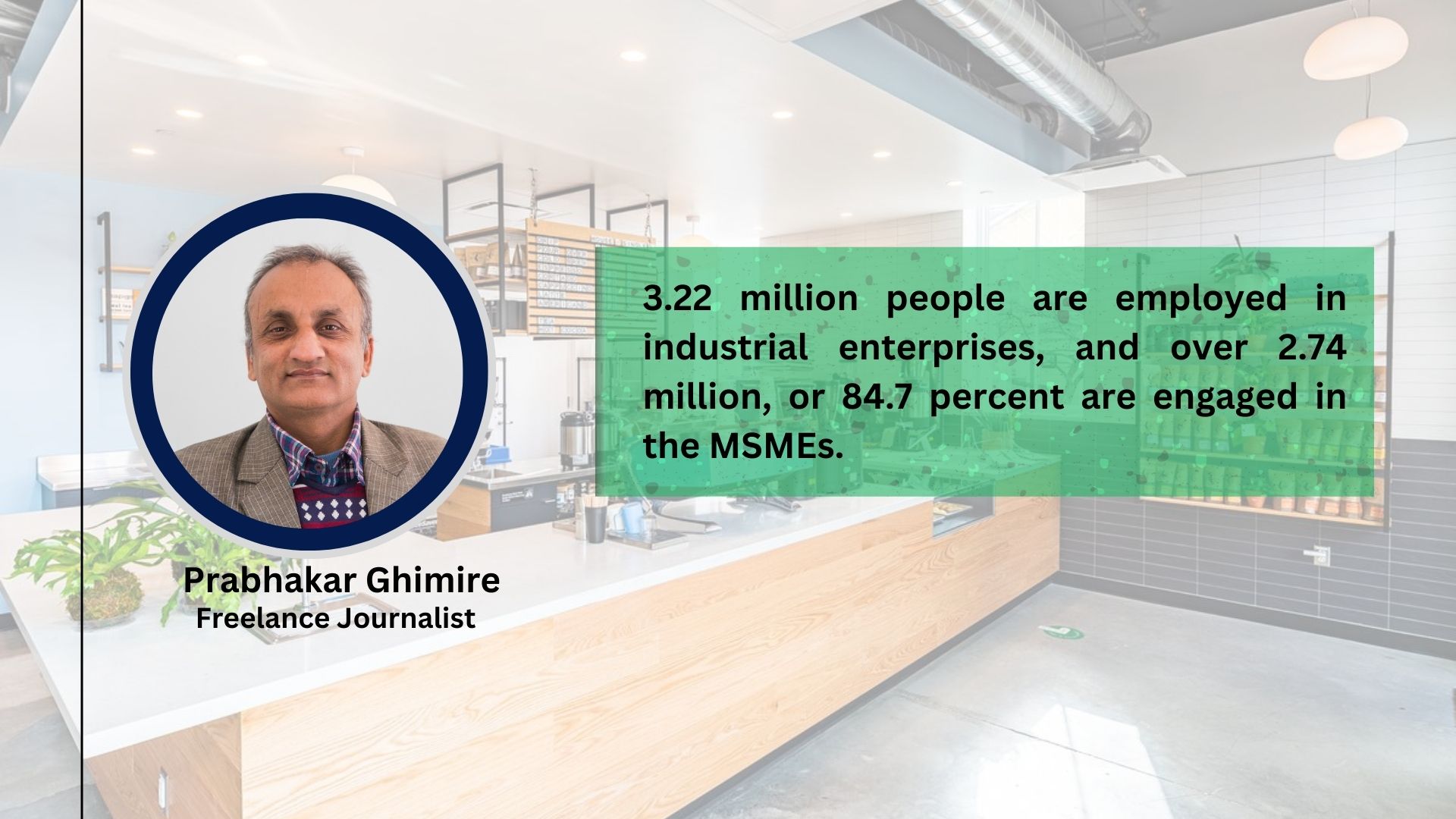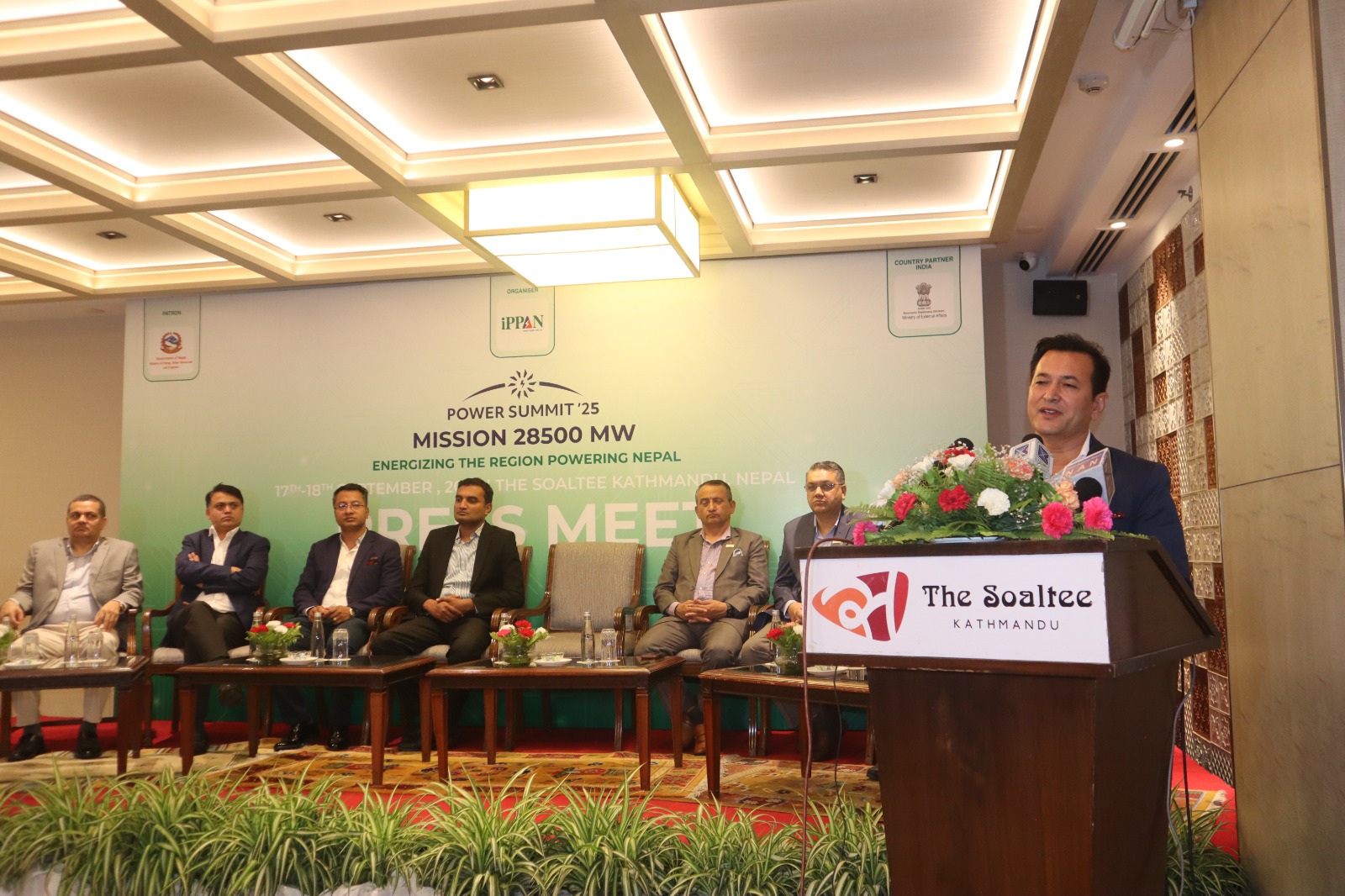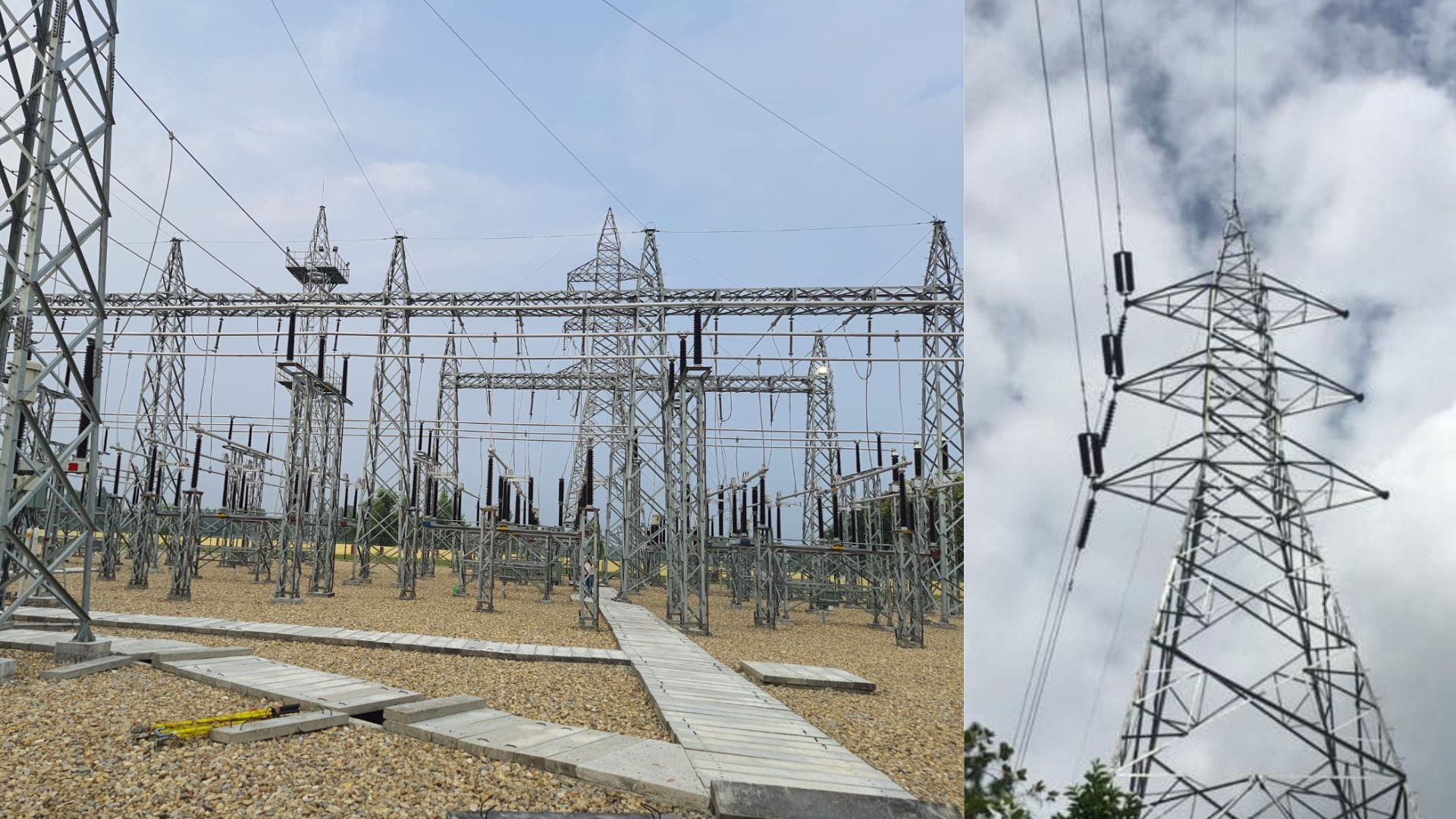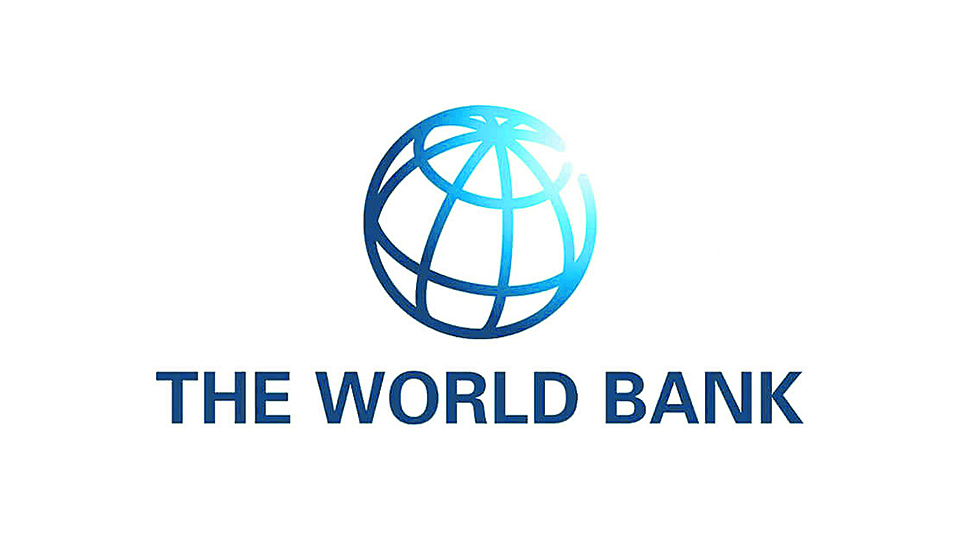
Employment generation has been one of the key priorities of every successive government in Nepal over the past several years. However, creating jobs is next to impossible without offering an appealing environment for industrial enterprises to flourish seamlessly. As the poorer countries have less capacity to manage big enterprises due to technological and financial complexities, the role of Micro, Small, and Medium-sized Enterprises (MSMEs) play a significant role to steer the economy.
The MSMEs are creating jobs in rural areas, especially for women contributing to gender empowerment and promoting the use of locally available raw materials. The National Economic Census 2018 shows that out of around 3.22 million people employed in industrial enterprises, over 2.74 million or 84.7 percent are engaged in the MSMEs. Out of the total employment generation by MSMEs, 69.3 percent are from micro-enterprises, 25.2 percent from small enterprises, and 5.5 percent from medium-sized enterprises.
The ‘Market Study to Understand Job Growth Potential in SMEs in Nepal’ published by the World Bank in 2020, citing a study by Business Oxygen, a venture capital fund manager, stated that the SMEs (excluding micro-enterprises) in Nepal contribute 98 percent of industrial establishments, employ 57 percent of the workforce, create 83 percent of industrial jobs and provide 80 percent the industrial sector’s contribution to Gross Domestic Product (GDP).
The role of women entrepreneurs in promoting MSMEs is undisputable, especially by offering jobs for those who are in need of income sources in rural parts of the country. In Nepal, 95.4 percent are micro-enterprises, 4.2 percent are small, 0.24 percent are medium-sized and 0.19 percent are large-scale. Data shows that the smaller the enterprises, the bigger the share of women’s employment. Among the MSMEs, the share of women employed in micro-enterprises, small enterprises, and medium enterprises stands at 38.5 percent, 36.5 percent, and 35.9 percent respectively. Even the leadership of women is higher in smaller businesses. On average 26.7 percent of managers are women in MSMEs, with 30.6 percent in micro-enterprises, 11 percent in small enterprises, and 8.9 percent in medium enterprises.
However, the government’s efforts to promote MSMEs through various policy and papers seems not reaching to the targeted groups- especially women entrepreneurs. The small -scale businesses, especially manufacturing enterprises, are finding it difficult to secure space in an ever-increasingly competitive market environment that is dominated by big industries. Condition of enterprises owned and operated by women are struggling hard to survive and expand amid the cut-throat market competition that needs stronger financial and marketing capabilities to thrive.
Recently I got an opportunity to interact with women entrepreneurs at two separate events in Kathmandu and Biratnagar. Those businesswomen, most of whom were young, energetic, and outspoken having the zeal to do something different, openly shared their experiences while incorporating and operating their small enterprises. “We are producing quality products at par with the market requirement. We can produce as much quantity as the markets demand. but our paramount problem is the lack of markets for our products. Our products are not finding due space even in the domestic market, let alone the international destinations,” – this is the theme of concern almost all women participants voiced in those forums.
Nepal’s trade deficit is largely attributed to its weak supply capacity. Local entrepreneurs complain that they are finding difficulty to sell their products not because of that their products are of inferior quality or that they could not supply as much demand by the markets, but due to the absence of market linkages to showcase their products. Especially, MSMEs are confronted with a number of problems in various stages of their business from inception to operation. The capacity of MSMEs is not sufficient to complete documentation to get their firms registered with the government and nor are they well-knowledgeable to secure required approvals from various agencies. Even if they resolve such problems MSMEs can’t compete with large-scale enterprises that are stronger in logistics, marketing, financing, and documentation.
As shared by women entrepreneurs, the lack of a platform to sell their products and services is discouraging to continuing their business in this age of ever-increasing competition in both domestic as well as international markets. Weak business promotion capability and innovative ideas among MSMEs present challenges for them to compete with large-scale industries that can spend huge for branding and marketing.
Domestic markets, which are also becoming more competitive are also posing a threat to the markets being enjoyed by the smallholder business. They can’t compete with larger businesses in various supply contracts as the small business can’t produce documents that larger ones can develop. Most of the micro-level enterprises are below the Value Added Tax (VAT) registration threshold and possess less capability to maintain supplies of products as would demand under bigger contracts. As they can’t produce VAT registration certificates, they are forced to stay away from participating in the supply contracts process. Despite being based in rural parts where the business opportunity is meager and markets of their products are non-existent, they are producing high-quality products using locally available raw materials. However, they lack the capacity to participate in forward linkage to find space in the big sales outs- marts, supermarkets, and departmental stores in big cities. Even if departmental stores and marts are ready to buy MSMEs’ products, they never offer cash payment for goods forcing the small business holders to wait weeks to get paid.
Unlike big businesses which are well-equipped with marketing skills and tools as well as branding techniques to expand the market, MSMEs lack such capacity for innovative and appealing strategies to promote business. Despite the huge potential for their products in international markets, they lack market intelligence to get information about quality requirements and changing market patterns in the global value chain. As they are operated with very low investment using traditional technologies, they are still to catch up with the pace of the larger ones to meet workplace standards and international requirements. The MSMEs are still to develop their capacity to handle independently the still-complicated customs process and export documentation to secure their presence in the global supply chain.
The SMEs which import raw materials are in worse conditions as they have to face various types of hassles at customs points due to the absence of knowledge about customs procedures. Even they don’t know about the incentives and privileges they are entitled to. The SMEs which deal with perishable raw materials and finished goods are vulnerable to further losses.
It is estimated that MSMEs are contributing more than 50 percent to job creation and 35 percent to global Gross Domestic Product (GDP) across the world. As per World Bank’s estimation, around 600 million jobs need to be created by 2030 to mobilize new entrants in the labor market globally. Without prioritizing MSMEs, which have been creating 7 out of 10 job opportunities in developing economies, the task of generating such millions of job opportunities cannot be materialized.
The government should support MSMEs to expand their market by providing hands-on training to explore domestic and international markets through market intelligence digital tools. Appealing branding capacity should be enhanced and better market access should be ensured with reliable forward linkages for the MSMEs to make them more competitive in the markets. Given the weak capacity to deal with the documents and another administrative processes from right before the inception of the business to operate, they need handholding from business support organizations and the relevant government agencies. Globally, an annual financing gap worth USD 5.2 trillion for the MSMEs has been estimated.
The MSMEs in Nepal, which are making a significant contribution to the national economy by creating jobs, especially for women in rural parts, are facing a financing gap worth around USD 3.6 billion due to weak access to financial institutions. As a large number of MSMEs are beyond financial access, the government should also provide financial support and enhance their managerial capacity in production, supplies, sales promotion, and branding of their products. The government and private sector should forge synergy to strengthen access of the MSMEs to financing agencies with convenient credit terms.
(Author Ghimire is a freelance journalist)









